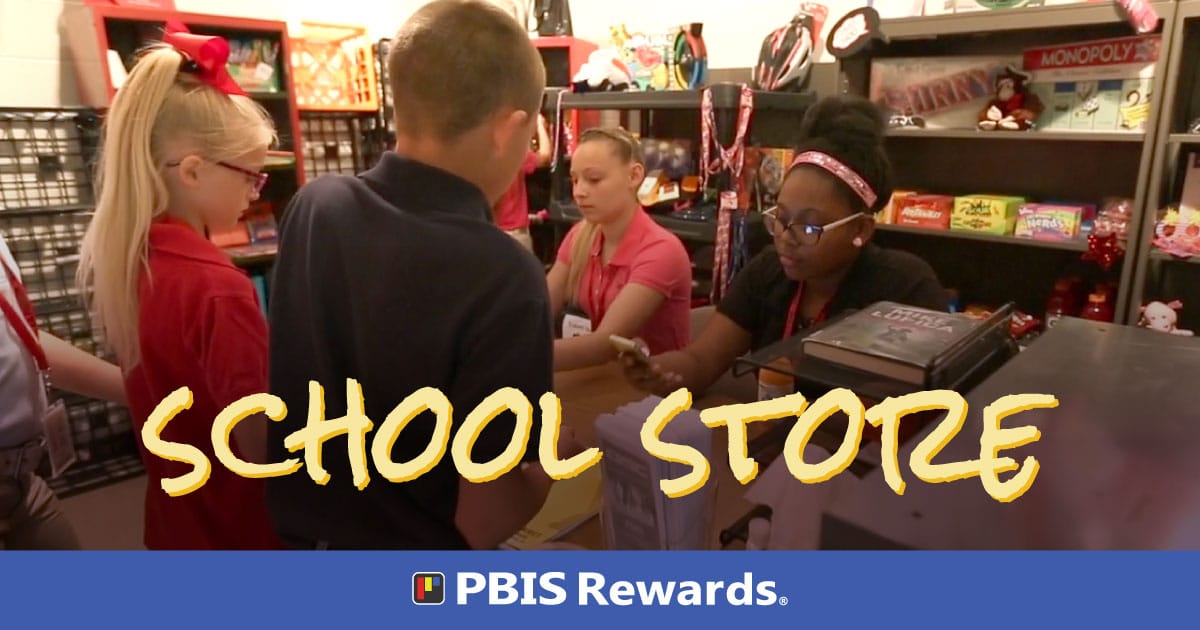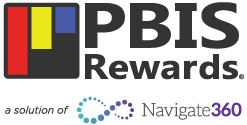Of all the elements that make up a PBIS initiative, the one that generates the most excitement for students is the school store. Once you connect PBIS points with items, events, and privileges, your school store becomes a focal point. No matter the age or grade level, students love shopping the school store.
How to Create a PBIS School Store
The great thing about a school store is it can be as simple or complex as you choose to make it. Some of these decisions will be based on considerations such as budget, space availability, manpower, and time commitment.
1. Location
Where you choose to locate your school store will depend on available space as well as how visible you wish to make your store. You can use something as small as a rolling cart, designate a closet to hold physical items, or go all out with a dedicated store space in an unused room. Schools that have limited budget can forego a physical store and offer privileges and events that cost little to no money.
2. Inventory
For many schools, stocking a school store relies heavily on available budget. Fortunately, there are numerous avenues for funding a school store. There are lots of free and low-cost incentives available. Be sure to poll your students to see what kinds of incentives they would like to see in the school store. This information can help you to plan your budget more efficiently.
3. Pricing
Because your “currency” is points, establishing prices for your incentives goes hand-in-hand with your school matrix. No matter what your points system looks like, you will need to price your incentives accordingly. Smaller, low-cost incentives will enable students to purchase items or privileges with just a few points and create a connection between good behavior and earning points to spend.
4. Store Hours
Running a school store is a time commitment. Some schools make their store available every week or two, while others operate on a continual basis. Who will operate your school store – teachers, admin, parent volunteers, students? What grade levels does your store serve? The answers to these questions will help to determine your store hours and/or days.
5. Display
How will students know what incentives are in the store? Creating a display can help promote the school store and create excitement. Display options can include bulletin boards, posters throughout the school, and/or a display case with item samples. Include points values for incentives so that students can plan their purchases and set goals for the future.
Running a School Store – For Teachers
Operating a school store is a team effort. However, “team effort” doesn’t mean the responsibility lies solely with the PBIS team. Each staff member can participate in the school store if they so choose. This can include ordering and stocking inventory, conducting sales, and tracking student points. Typically, one teacher is the designated “manager” who delegates tasks to others.
For schools using a digital token economy, teachers can take advantage of the digital element to teach financial literacy. Concepts such as earnings, budgeting, saving, and goal-setting can be taught as early as elementary school.
Running a School Store – For Students
In some schools, the PBIS school store is operated by the students. They conduct transactions, maintain inventory, deliver items, and in some cases, order incentive supplies. Student involvement depends on grade level. While very young students may not be capable of these tasks, older students in middle grades and high school are often well-suited for such responsibility. A school store is a perfect opportunity for numerous lesson plans centered on business, finance, math, marketing, and so on.
Involving students in the PBIS school store is yet another way to encourage buy-in among your students and teachers. Teacher buy-in is critical to the success of your PBIS initiative, and their enthusiasm can be contagious. Plus, allowing students some responsibility in the school store can benefit your PBIS initiative in many ways.
Using PBIS Rewards to Run Your School Store
The suite of apps from PBIS Rewards can make running a school store much easier.
Staff can maximize the effectiveness of your PBIS initiative by recognizing students anywhere, any time. Awarding points is as easy as scanning a student badge or ID or selecting one or more students within the app. Points accumulate in student accounts automatically and stay there until the student uses them to purchase an incentive. No lost tokens and your staff and volunteers aren’t spending precious time cutting out bucks, paws, or tickets.
PBIS Rewards allows schools to stock and track both tangible and intangible incentives. Keep tabs on inventory and get a clear picture of which incentives excite students the most. Students can shop the school store in whatever form it takes, whether that’s completely virtual or on-site or a mixture of the two. Points are automatically deducted from student accounts as purchases are made. The software tracks everything! Plus, transactions are so simple you can turn over running the school store to students or parent volunteers.
PBIS Rewards lets teachers get in on the school store action, too! Teachers can create their own private classroom stores and stock them with incentives unique to their classroom. There is also a staff-specific store, Teacher Rewards, that enables schools to recognize and award staff members for the awesome job they do!
If you’d like to run your PBIS school store more efficiently, PBIS Rewards can help! Contact us for more information or request a demo!
Request a Demo

